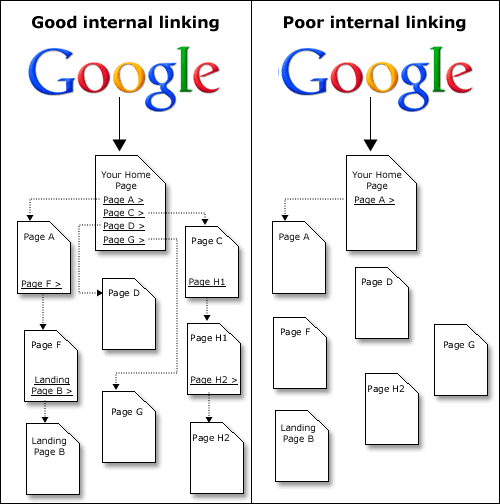There are over 1 billion websites on the internet, and Google has to parse through trillions of documents on the web so it can generate search results in a matter of milliseconds. It does this by crawling and indexing websites to build an enormous file cabinet of the most valuable information out there.
Contrary to what you may think, Google doesn’t necessarily visit your website every day to see if there’s anything new and exciting. You need to optimize your site for crawling and indexability if you want to show up in Google search results.
Here’s how you can improve your google presence in 5 steps:
Step 1: Create an XML sitemap
This is a map you create to instruct search crawlers about the pages that exist on your website, how they’re organized, and which to look at. These are strictly machine-readable. They aren’t intended for your audience to see, but they’re essential if you want your site to be crawled and indexed. And according to Google, they’re especially important if:
- Your site is new and doesn’t have a lot of external links pointing to it
- Your site is large and has a lot of pages to index (eg.: ecommerce product pages)
- Your site doesn’t have a strong internal linking structure
Some content management systems generate these automatically, other sites built from scratch may not. If you aren’t sure whether or not you have one, talk to your tech team to confirm you have one and that it’s been submitted to Google Webmaster Tools.
Step 2: Minimize 404 errors
Google bots are given a crawl budget, and they’re only allowed to spend so much time on each website before moving on to other web pages. If you have a lot of 404 errors on your site, you might be throwing away your crawl budget.
A 404 error is what happens when a person or a search bot tries to visit a page that no longer exists, such as:
- A landing page for a product that you no longer carry
- A promotion that’s expired
- A product that you took down
- A link that you changed
You want to keep these 404 pages to a minimum. If search crawlers run into a dead-end and can’t easily navigate any further, your crawl budget will be spent on pages that don’t offer any real value.
Avoid these with redirects that point visitors toward pages where they can find relevant information.
But just for the case you generate 404 pages, have a custom design for them, instructing the user what to do next.
Step 3: Check for crawl errors with Robot.txt
If you want to improve your search presence, you should use Robot.txt wisely. Robot.txt files are notes that tell Google’s search crawlers whether or not to look at certain page, folder, or directory.
Why would you use these?
- To avoid issues with duplicate content in the case of a redirect
- To keep customers’ sensitive data secure
- To prevent indexing if your site is live, but you’re not ready for Google to see it
Robot.txt tells search crawlers not to access certain pages, so they will move on and crawl pages that should be added to Google’s index.
Not every site has robot.txt files, and not every site needs them. Use robot.txt only when necessary. Having pages that are annotated incorrectly can cause crawl errors and prevent your site from being indexed or ranking in search results. You can check your website for crawl errors with Google Webmaster Tools.
Step 4: Create an internal linking strategy
Google’s crawlers follow links. The more links they find, the more content they cache and add to Google’s index. When they hit a dead-end, they either stop crawling or double-back to find new pathways.
One of the simplest ways to make sure your site gets indexed is to make it easy to crawl with an internal linking strategy and deep links.
Deep links are good for both user experience and crawlability. These are hyperlinks you add to your content to point readers and crawlers to related pages on your website.
For example, you might add a deep link on the keyword “social media marketing” to a blog about Facebook that points to a landing page about your Social Media Marketing services. You could also link to a related article, case study, or customer testimonial.
The idea is that you’re making sure the most valuable pages on your website can easily be found and indexed within a couple of clicks.
Step 5. Publish text versions of visual assets
Visual content is great for user experience, but it’s not so great for search crawlers. Google bots can identify what types of files you have on your website – mp4s, JPGs, GIFs, PNGs – but they can’t crawl the content to determine what it’s about. So you might have valuable resources, rich in keywords and SEO value, that are going unnoticed.
To fix this, publish written transcripts to accompany multimedia assets. Google bots can crawl the text to index all of the keywords and links they contain. (It’s also a good idea to submit a separate XML video sitemap to Google for indexing.)
Search engine optimization isn’t static. You need to stay on top of the latest trends and adjust your strategy in order to rise in Google’s search ranks and get in front of your customers.








